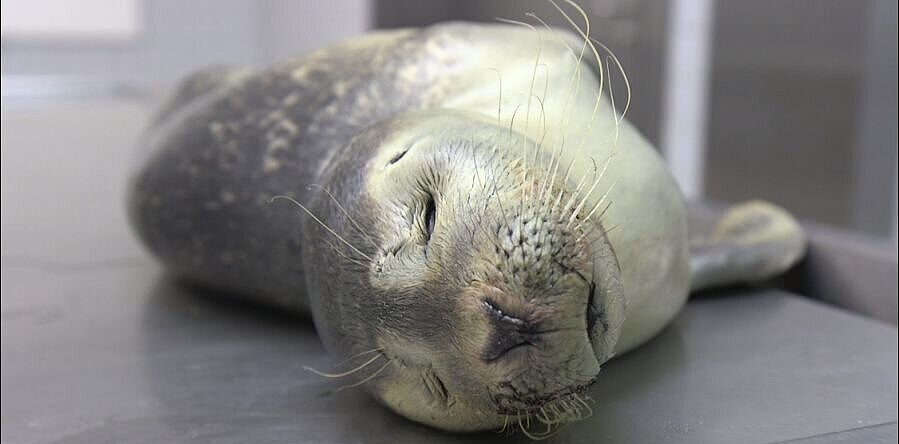
| Project leader: | Prof. Prof. h. c. Dr. Ursula Siebert |
|---|---|
| Scientific staff: | Lotte Caecilia Striewe |
| Projekt term: | Anfang 2021 bis Ende 2021 |
| Sponsorship: | Ministry of Energy, Agriculture, the Environment, Nature and Digitalisation (MELUND) |
Project description
The project carried out for the Ministry for Energy Transition, Agriculture, Environment, Nature and Digitalisation (MELUND) aims to record the development of the health status of wild harbour seals in Schleswig-Holstein. A distinction is made between live and dead monitoring.
In the course of the live monitoring, the State Agency for Coastal Protection, National Park and Marine Conservation (LKN) finances seal captures on the Lorenzensplate. Here, the seals are caught alive, fixed in tube nets and measured lengthwise for an approximate size reference. In addition, blood and swab samples are taken from the seals for further examination. After the examination and sampling, the animals are released.
For the monitoring of dead seals, seals found dead or killed for animal welfare reasons are brought from the North Sea and the Baltic Sea to the ITAW in Büsum, where they are autopsied. The autopsies serve to record data on morphometry and population structure as well as to examine the health status of the individuals. In addition, the causes of disease and, if possible, the causes of death are recorded. After the macroscopic examination, organ samples are also examined histopathologically. In addition, samples are taken for further examinations, which include bacteriology and virology, but also toxicology and screening for microplastic particles.
Since ITAW has been monitoring both live and dead seals for several years, the investigations described above provide a good overview of the current health of the seal populations in the North Sea and Baltic Sea and how it compares to previous years. In addition, the studies serve to address a wide range of other questions. For example, human influences on the marine mammals can be investigated or the occurrence of important infectious and potentially dangerous zoonotic pathogens can be monitored.
The cooperation of the ITAW staff with the so-called seal hunters is fundamental to the existence of the project. These work on a voluntary basis for the state of Schleswig-Holstein and are often the first people to contact when sick seals are found on the beach. They are trained by the ITAW in cooperation with the administration of the Wadden Sea National Park and the Friedrichskoog Seal Station so that they can decide independently whether the seals need help. If there is no prospect of recovery and a further life in the wild for the seals due to serious illness or injury, the seal hunters can release the animals from their suffering.
Contact person
Stiftung Tierärztliche Hochschule Hannover
Institute for Terrestrial and Aquatic Wildlife Research
Werftstr. 6
25761 Büsum
Lotte Caecilia Striewe
Phone: +49 (0)511-8568180
e-mail


